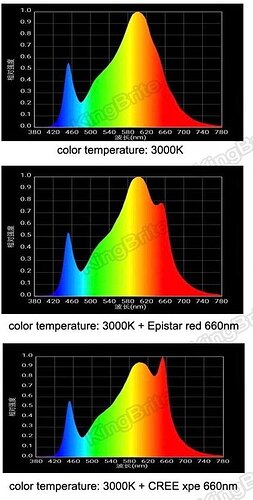So another member here has me curious about the Kingbrite lights.
My goal is to maximize my annual yield while growing no more than 4 plants simultaneously.
What I am envisioning is 2 grow closets or tents that I will make by subdividing my 16 x 8 grow room. 2 3.5 x 7 areas with a work area in between. I will veg 2 photo’s for 2 months, then I will bloom them under a scrog net while I start 2 more and veg them for the bloom period of the other plants. Then rinse and repeat. every harvest. I figure with 2 months of veg the plants should get pretty big and each plant will have a 3.5 x 3.5 flower area. I may re-evaluate this strategy if I ever end up with a mother plant of a strain I fall in love with but for now, I’d like to rotate through my multi packs and find what I like first with something like the set-up I describe.
I bought a bunch of no-name quantum boards, they were very inexpensive, and I was going to be satisfied as long as my harvest is good from the auto’s I started out with. But I posted the “lab test” results that the “engineer” from the “manufacturer” sent to me, and the electrical engineer who is a moderator here said the specs looked “weird”. I then found another brand selling the exact same panel under another name, and I bought it to confirm. So there is no engineer at the company who sold me the lights, and some other oem company manufactured them and put their name on it. There is just enough dishonesty here to make me uneasy and questioning if the PPFD maps or anything in the marketing materials is accurate.
Given that Kingbrite is a known manufacturer with a history, and they are using the same components as the main brands, I think the voice in the back of my head saying I didn’t get what was advertised will shut the heck up.
So, I think my plan is to buy 6 of the 240 Watt Panels. I’ll put 2 panels in each closet permanently and move 2 panels into whichever closet is flowering. I would prefer to just buy 8 and use the dimmer, but I’ll save $350 out of the gate if I do it this way, and I’d like to keep the costs down wherever I can. I can buy 2 more panels later anyway if I get tired of moving the 2 lights. With 1 light over a 3.5 x 3.5 I will have 20 watts per sq ft, with 2 I will have 40 Watts. This should work.
Lots of background, but here’s my question. These Kingbrite lights come in several different configurations with both the 301b and 301h samsung diodes.
First Color temperature, do I want 3000K, 3500K, or 4000K 301 diodes?
I was thinking 3000K for all 6 lamps since flowering is the most important period to me, but I thought about it and maybe I get 4 of the 3500K and 2 of the 3000K and rotate the 3000K ones?
Will I see a significant difference in flowering between 3000K and 3500K?
Another alternative would be to rotate all the lights, and then I could get 2 4000K lamps for veg time, and 4 3000K for bloom time. As I type it, this suddenly makes most sense to me.
Then once I figure out the 301 diode temperature, I move on to the rest of the configuration.
The one I am leaning towards is their most expensive and includes The UV and IR - are these necessary, and do they make a significant difference? I ask because otherwise those diodes would be replaced with more of the other types.
496 pcs Samsung 301H+64 pcs epistar 660nm+8pcs epistar UV+8pcs epistar IR
This would be the same board without the UV and IR diodes - would assume this is brighter to the eye. It’s $10 less, so not significant.
504pcs Samsung LM301H+72pcs Epistar 660nm
This has the same configuration as the one above, but uses more expensive 660nm diodes. It is their most expensive model and does not include the IR and UV which is why I am questioning if they are necessary. This one is $70 more than the same board with epistar diodes paired with Samsung, and it’s $60 more than the one with UV and IR. Keep in mind this is significant, it raises the price by more than 50% and I’m not sure I want to pay that much times 6.
The same board with only samsung 3000K 4000K or 3500K is the same price as the panel without ir and uv with the inexpensive diodes.
The configurations above except the most expensive are also available with the 301B diode instead of the 301H diode for $10 cheaper per unit.
So, what do you recommend?
do you recommend the uv and ir? should I get that just for bloom lights? Skip it and save money?
I’ve read the 301B and 301H are the same, or at least their measurements are the same, is it true? Should I save 6 x $10 = $60 and go with 301B, or have the assurance I’m using the horticulture diode.
I could get different configurations for Veg and Bloom.
2 x 4K 301b with no IR and UV
4 x 3K 301H with IR and UV
I don’t think I want the one with only 301B or 301H even just for veg because in a pinch or for an auto I would like the light to have blooming capabilities.
Please feel free to address any or all. And thanks for reading.
